How Should a Cradlepoint Be Setup with Comcast Gateway
Comcast resells an Internet connectivity solution offered by Cradlepoint. The Cradlepoint router uses cellular radio (4G and 5G) to provide a backup route for Internet traffic as a fail over.
If it’s even unboxed, I often find the Cradlepoint installed by the Comcast technician in the following way.
In this scenario, the Cradlepoint receives an Ethernet hand-off from the Comcast Gateway. But that hand-off isn’t a WAN port — it’s a local, standard Ethernet port. So, at first glance, you might presume that the Comcast Gateway is dual-honed (that it has two WAN ports: one for the coax out and one for the Ethernet hand-off to the Cradlepoint) and there’s a load-balancing logic in the Comcast Gateway so that (when the Internet goes down) the WAN port switches to the Cradlepoint.
However, this isn’t true. It’s a regular Ethernet hand-off; the Comcast Gateway isn’t dual-honed.
Therefore, if the Comcast ISP connection drops, even though the Cradlepoint is on, connected, and receiving a signal, it’s not offering anything to your network. The Comcast Gateway drops, and the clients connected behind your Ethernet Switch can’t route. I’ve found plenty of folks paying for this service for years and yet it adds no value.
The correct topology looks like this.
The Comcast Gateway hands-off one Ethernet cable to the WAN port of the Cradlepoint; your Ethernet Switch and/or PC’s are behind the Cradlepoint.
In this configuration, the Cradlepoint is testing for connectivity against its WAN port. If the Comcast Gateway goes down, the load balancing logic of the Cradlepoint starts routing Ethernet packets against the radio (over wireless). All’s good, and the users don’t even notice the difference.
Now, this configuration creates some LAN IP schema challenges.
Typically, the network would have DHCP’d against the Comcast Gateway’s local DHCP service, handing out addresses like 10.1.10.x, and any statics you might have (say, for a multifunction copier) are configured to that address schema.
Moving the LAN behind the Cradlepoint disrupts those configurations. LAN PC’s now DHCP against the Cradlepoint, which hands out a different schema, like 192.168.165.x. Machines that use standard IP stacks with no statics receive the DHCP assignment and begin routing; devices configured statically need to be changed to the new schema.
But what if you wanted to modify the LAN settings on the Cradlepoint? Like, to setup a new DHCP scope or add static reservations? Sorry, the Cradlepoint can’t be administered by a local administrator nor by Comcast; Comcast tier 1 business support will actually tell you to contact Cradlepoint. So your options in this configuration are limited. So, ideally, we’d insert a dual-honed router of our own so we can better control the LAN.
In this configuration, we’ve inserted a consumer dual-honed router: there are two WAN ports. WAN 1 is cross-connected by an Ethernet cable to the Comcast Gateway; WAN 2 is cross-connected by an Ethernet cable to the Cradlepoint’s Ethernet port.
Load-balancing logic in the Consumer Router allows us to say, if WAN 1 fails, fail-over to WAN 2. WAN 2 is the Cradlepoint, connected by cellular, and it routes the LAN packets to the Internet across the Cradlepoint.
You’ll notice that I didn’t connect the WAN port of the Cradlepoint to the Comcast Gateway. It’s unnecessary: the load-balancing feature of the Consumer Router is pinging both WAN 1 and WAN 2 to decide when to fail-over.
In this configuration, you can control the LAN’s settings (DHCP scopes, reservations, IP schema, or any other typical LAN features you want to implement) from the Consumer Router. The Cradlepoint is just a WAN2 transit point used for fail-over.
Ideally, this is the configuration we’d like to see, where we gain the Cradlepoint’s advantages but are not subject to its administrative limitations.
R




